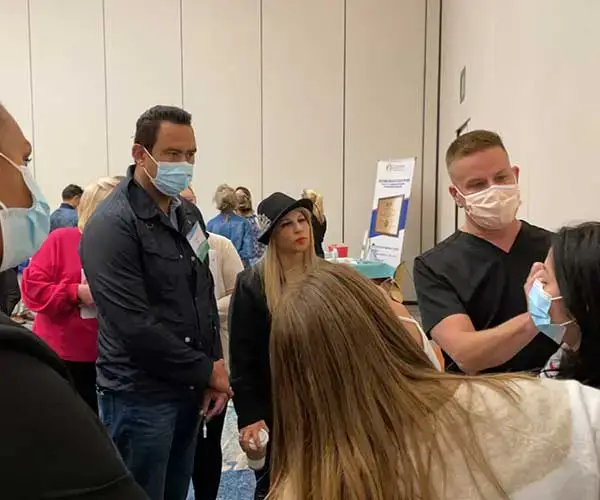How to Get Botox® for Migraines: A Complete Guide
By Dr. Stephen Cosentino
PRESIDENT OF EMPIRE MEDICAL TRAINING
Most people know that botulinum toxin formulations like Botox® can temporarily reduce the appearance of fine lines and wrinkles on the face and neck.
Fewer know that Botox can also treat some common (and not so common) musculoskeletal issues. Chief among these is migraine headache, the cause of untold suffering for millions of Americans. Trained providers have dispensed more than 5 million Botox injections to treat chronic migraines — and counting.
If you experience at least 15 migraine headache days per month, you may be a good candidate for Botox treatment. Find out how to get it (and what to know before you do).
How to Get Botox for Migraines
You can’t buy Botox at the pharmacy and inject it yourself. You need to work with a licensed, board-certified medical provider who has completed a comprehensive Botox training course.
To find a provider who treats chronic migraine in your area, use this Botox specialist finder from AbbVie, Botox’s manufacturer. If you have more than one option, interview a few and choose the one you’re most comfortable with. There’s a good chance you’ll work with them for many months, if not years, so you want it to be a good fit.
Once you find a provider, schedule an initial consultation. They’ll evaluate you to confirm you’re a good fit for Botox migraine treatment and put together a treatment plan if you are.
Here’s what you should know before beginning treatment:
- How Botox Works to Prevent Migraine. Botulinum toxin blocks nerve signals between the head and neck muscles and the brain, reducing pain and other symptoms associated with migraine.
- How Much Botox Is Needed. This depends, but in general, more Botox is needed to treat migraine-related head and neck pain than to address cosmetic complaints like crow’s feet. Expect to receive 20 to 40 shots per treatment session.
- How Long Botox Lasts. Botox reduces migraine for at least 12 weeks after each treatment. After this, you may need another round of treatment.
- How Effective Botox Is. In clinical studies, Botox reduced the number of headache days per month by 8 or 9, compared with 6 or 7 with a placebo.
- What Side Effects to Expect. Common side effects of Botox include headache, neck pain, bruising, swelling, and flulike symptoms. Most are mild and go away within a few days.
Are You a Good Candidate to Get Botox Treatments for Chronic Migraines?
Not everyone who experiences chronic migraine attacks is a good candidate for Botox treatment. Only your medical provider can determine that for sure. But before you schedule an appointment, see whether you meet the basic criteria for treatment:
- You Have 15 or More Headache Days a Month. Botox is FDA approved for people who experience migraines at least 15 days per month. If your headaches are less frequent, you’ll need to consider other treatment options.
- You Experience Migraines, Not Other Types of Headaches. Botox is only approved to treat migraine headaches (including tension-type migraines). It’s not approved for cluster headaches or any other type.
- You’re Not Allergic to Any of the Ingredients in Botox. Botox itself isn’t a known allergen, but the formulation contains other ingredients that may trigger allergic reactions. Though rare, these reactions can be serious.
- You’re Over 18. Botox isn’t approved for use in children and adolescents under 18.
You Don’t Have Any Other Contraindications. Botox is safe and effective in most adults, but certain health conditions may rule it out for you. Ask your provider for more information.


